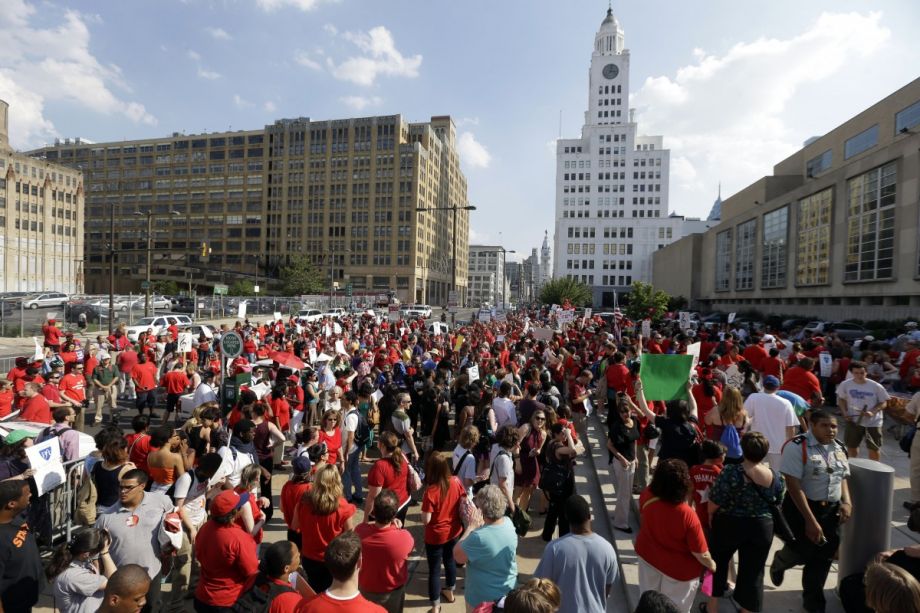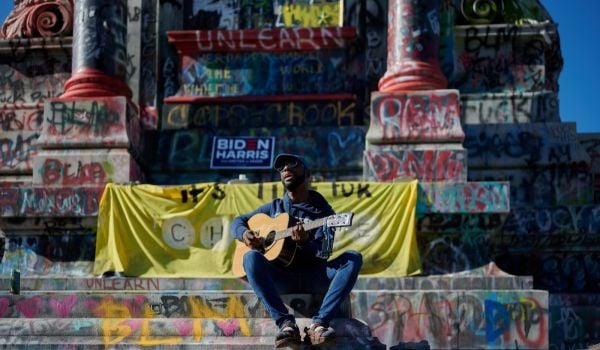In January 2013, as my group of about 50 students from Paul Robeson High School marched the six blocks down Market Street in West Philadelphia to University City High School, a man jumped out of his silver minivan and asked us to wait five minutes. He was part of West Philly Stepper, a drum and step performance group that practiced in our gym after hours. They wanted to join us. And so it came to be that the modern-day army of Paul Robeson, on a mission to save our school from closure, was led into the Philadelphia School District’s community forum with a ferocious, uplifting cadence. Sadly, our drum team was turned away at the door.
I had been to previous meetings where you could bathe in the anger. By the time we arrived at this one, animosity had already boiled over. Speakers swore and screamed. Some gave up any pretense of speaking to the assembled bureaucrats and turned 180 degrees to speak to the audience. One gentleman started his remarks by calling Superintendent William Hite a “race traitor,” and had similar words for the Facilities Master Plan (FMP) team. The students from University City High used spoken word poetry to make their case, as they had at every meeting in every corner of the city. (Two months later, when the School Reform Commission voted 4-1 to close them, I saw those students collapse in tears.)
The scene was surreal. Members of the International Workers of the World upstaged the Superintendent (I’ve been tested many times as a teacher, but explaining to the students that allying with local Marxists wasn’t the best way to save our school was one of the more complicated conversations) and competed with small groups pitching their own “save our schools” plans. My students stood out because they firmly presented their report, asked pointed questions, and listened to the reply. They acted as if they were part of a real, democratic process. The failure, as it always is, was with the adults. (For an in-depth look at how the public engagement process worked in Philadelphia and other cities, see the Next City Forefront “Shouting to Be Heard: The Case for Rethinking Public Engagement.)
Two months after the first meeting in the process, the FMP team members had mastered the art of equivocation: Rephrase the question, talk in generalities, reiterate admiration for the community. The financial people would talk of savings over time, particularly fictitious in hindsight since 4,000 students fled the district following the school closings.
District leadership has zero credibility with its patrons so there was no promise Hite or anyone else could make that people expected to them to keep. These communities — North Philadelphia, West Philadelphia, Southwest, Germantown — had reason to believe that this plan, well intended or not, would fall short.
Their fears turned out to be founded. Even though the District swore the school my students would go to was much safer than its reputation, a year later, that school was back on the state’s “persistently dangerous” list.
A month after closing almost two dozen schools, Hite (with a different team of specialists) announced the District was broke and would need concessions from all workers. The state withheld $50 million in federal funding to force change, leading to schools without nurses and only interim guidance counselors. Combine this with new students in new neighborhoods, and the results were predictable: a riot at Ben Franklin High School, chaos at another in Southwest Philadelphia. As of writing this piece, two children have died after falling sick in schools without nurses.
Everyone on the University City High School stage that January night was completely insulated from the policies they were defending. The FMP group exuded the privilege that comes from being in charge. They wouldn’t have to walk through gang territory or take a 70-minute bus ride just to stay in their ROTC program. They breathed easy and smiled as students, parents and teachers expressed dismay and outrage. They applauded my students for their research, but ignored the eight-point criteria used in Baltimore that showed there was no reason to close our school. They didn’t care. They didn’t have to. Not a single person involved in the process, from the Boston Consulting Group that wrote the closure plan to the William Penn Foundation that funded it to the School Reform Commission that voted on it — none of them are accountable to the people who are suffering the consequences.
The Equity Factor is made possible with the support of the Surdna Foundation.

















